For most people it’s hard to imagine that grown men are having sexual contact with, paying for, and raping children. Yet this is happening with such frequency that this crime, human trafficking, is the now the fastest growing crime in the world. (Harris, K. 2012). What is causing grown men to abuse children in this way? There are several factors that ignite this crime, but two triggers are directly linked to the purchase of sex with minors. Research shows that often these men were themselves molested in childhood and perpetuate the cycle of abuse once they become adults. There is also evidence that links the consumption of pornography to child sex trafficking. Media often blames criminals, police blame parents, parents blame schools, and so it goes. The question is: what is driving the demand for sex with children and can we stop it?
One school of thought evaluating the origins of exploitive behavior is premised upon the idea that molesters were themselves molested. There is strong evidence supporting a connection between experiencing childhood abuse and later becoming a child molester. Often in association with a lack of control over their own childhood, these once victims grow up and seek out means to steal the innocence of other children in order to gain some type of control over what was stolen from them; the abused becomes the predator. (Hooper, J. 2014). Studies indicate the likelihood that a molested child will grow up to molest others is greater than 50 percent. (Abel, G. and Harlow, G. 2002). Studies further indicate that these recidivist behaviors mean that men will continue to desire children for sex, and in more than 90 percent of child rapes, the offender knew the child. (Gado, M. 2013).
The second trigger is the link between pornography and sex with children. Researchers discovered that the human brain demonstrates the exact same chemical response when taking drugs as it does when consuming pornography. (Hilton, D.L. and Watts, C. 2011). The same chemical mediators are released that cause the body to react in a similar way and even become addicted in the same way. (Doidge, N. 2007). Just like with drugs, there are some consumers who can become addicted to pornography after their first viewing while others appear to never become addicted. (Yuan, K., and Tian, J., 2011). Similar to substance addiction, addiction to pornography consumption may begin after the first encounter or can occur over a period of repeated exposure, and not without consequences.
There is often a common denominator between buying sex with children and consuming child pornography. News coverage about child pornography being found on people’s personal computers who were arrested for sex offenses against children is common, and research shows that in 80 percent of child sexual abuse arrests, the offender also possessed child pornography. (Peters, R., Lederer, L., and Kelly, S., 2014). Viewing child pornography causes a physical response in the brain that releases chemical mediators which can lead to addiction and subsequently acting on those addictions with real children. The similarities to drug use and pornography are serious cause for concern. Just as a drug addict must constantly increase the dosage to get the same high, consumer of pornography often needs to increase the deviancy of the pornography. Consumption of pornography increases with this level of addiction and can lead to fetish pornography, including child pornography. (Paul, P. 2007). This extreme level of consumption can then lead to the most deviant form of pornography—violent sexual acts against children.
Child pornography is the most violent type of pornography because it involves forcing a child to be sexually violated. Often, many who consume violent child pornography then act on these fantasies involving real children. Sadly, not many men think about the risk associated with watching pornography and its destructive consequences to children, and predicting who will become addicted and where that addiction will lead is difficult to forecast. (Angres, D. H. and Bettinardi-Angres, K., 2008). Children are being raped by men who want to act out on fantasies developed through consumption of child pornography. The direct link between child pornography and raping children begs the question: what are we doing to stop child pornography from being consumed and fueling child sex trafficking? Society must recognize that child pornography has lasting harmful consequences both for the children being filmed and the all too real possibility of predators then finding and victimizing other children.
How can you or I make a difference and prevent this from happening? You are reading this blog because you can make a difference. You can share what you have learned and make a decision to be part of the solution. There are many ways for you to get involved. Check with your state to find local coalitions in the fight against child sex trafficking. These coalitions offer many options for people to get involved. For instance, neighborhood watches monitor parks, playgrounds, and bus stops for potential predators. You can also refer others to this website so they too can be educated. Clearly it is important to share with others that there are risks involved with watching pornography and why these risks exist. You can also make a difference by educating your family and friends. You can be a voice for the children who need someone to stand up for them and protect them.
Lastly, there are resources available for those who have been molested or have watched pornography. If you think you need help to recover from what you’ve experienced, then it is time to take control of your life and be restored. There are people out there who care about you and want to see you healthy. Sometimes in life it is not a matter of what you’ve been through, but really about how you handle it. By making the decision to stop the cycle of abuse or addiction, your life can have new purpose. You can get help and then be a help to others. The cycle of addiction does not have to continue. With your decision to get help, you can make all the difference and your life can save a life. We need everyone to fight this crime and children are depending on us to protect them.
A List of References for those who are addicted to pornography:
Fortify: A Step Toward Recovery
feedtherightwolf.com
sexualrecovery.com
uncommonhelp.me
sexualcontrol.com
centerforhealthysexuality.com
focusonthefamily.com
purelife.Com
recoveryconnection.org
netsafe.org
quora.com
References
Abel, G., & Harlow, N. (2002, April 1). Molestation Prevention Study. Retrieved September 9, 2014, from http://www.childmolestationprevention.org/pdfs/study.pdf
Angres, D. H. and Bettinardi-Angres, K. (2008). The Disease of Addiction: Origins, Treatment, and Recovery. Disease-a-Month 54: 696–721. https://www.reshealth.org/pdfs/subsites/addiction/the_disease_of_addiction.pdf
Doidge, N. (2007). The Brain That Changes Itself. New York: Penguin Books http://www.karenpapemd.com/index.php/the-brain-that-changes-itself-science-by-norman-doidge-md-new-york-penguin-group-2007/
Gado, M. (2013, January 1). The Slaughter of Innocence. Retrieved September 4, 2014. http://www.crimelibrary.com/criminal_mind/psychology/pedophiles/1.html
Harris, K. (2012, January 1). Human Trafficking. Retrieved September 4, 2014 http://oag.ca.gov/sites/all/files/agweb/pdfs/ht/human-trafficking-2012.pdf
Hilton, D. L., and Watts, C. (2011). Pornography Addiction: A Neuroscience Perspective. Surgical Neurology International, 2: 19; (http://www.ncbi.nlm.nih.gov/pmc/articles/PMC3050060/) http://www.fightthenewdrug.org/get-the-facts
Hooper, J. (n.d.). There’s No Single Path to Sexually Using or Abusing a Child. Retrieved September 10, 2014, from https://1in6.org/men/get-information/online-readings/others-who-were-involved-or-not/why-do-people-sexually-use-or-abuse-children/
Paul, P. (2007). Pornified: How Pornography Is Transforming Our Lives, Our Relationships, and Our Families. New York: Henry Hold and Co., 75; http://www.hatch.senate.gov/public/index.cfm/releases?ID=e228e97a-9f9e-4428-8a9e-6d4f03bdc8d0
Peters, R., Lederer, L., & Kelly, S. (n.d.). Pornography and Trafficking. Retrieved September 10, 2014, from http://soldnomore.org/pornography-and-trafficking/
Yuan, K., Quin, W., Lui, Y., and Tian, J. (2011). Internet Addiction: Neuroimaging Findings. Communicative & Integrative Biology 4, 6: 637–639; Zhou, Y., Lin, F., Du, Y., Qin, L., Zhao, Z., Xu, J., et al. (2011) http://www.ncbi.nlm.nih.gov/pmc/articles/PMC3960020/






